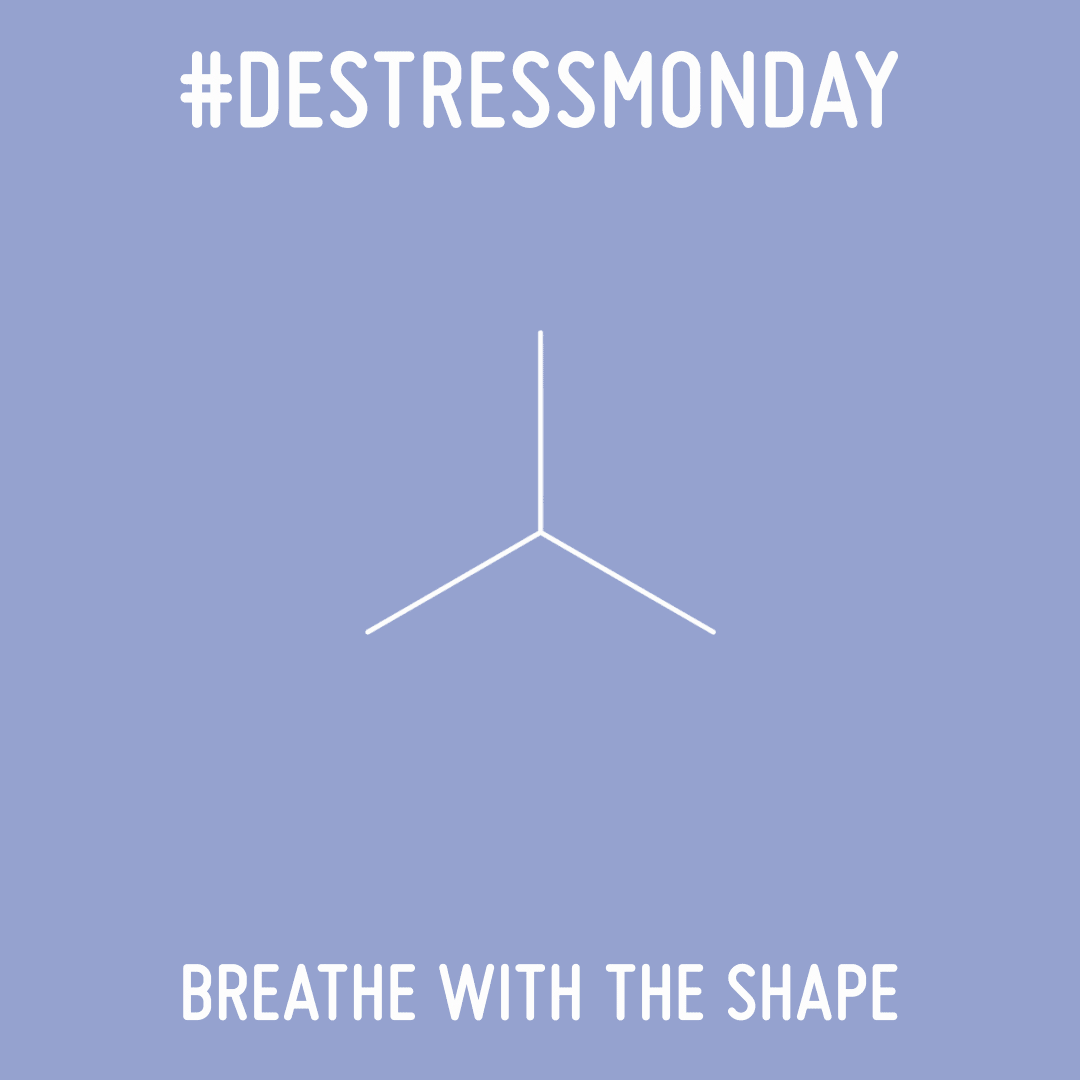![15 Best AI Presentation Makers in 2024 [Free & Paid]](https://visme.co/blog/wp-content/uploads/2023/11/Best-AI-Presentation-Makers-in-2024-Thumbnail-500x280.jpg)
Content Types


Mindfulness may seem like the hot new “It Girl,” promising to improve mental and physical health, concentration, and acceptance. However, mindfulness is an ancient Buddhist practice, a practice that is incredibly relevant to the present day.
You don’t have to become a Buddhist to be mindful. The Buddha said that “mindfulness is useful everywhere.” This usefulness extends to creating powerful presentations that will help capture an audience’s attention and interest.

What’s This Got to Do with Presentations?
How Does Mindful Presenting Help You?
How Can You Become More Mindful?
Mindfulness is the state of active, open awareness of the present. You observe your thoughts and feelings without judgment.
The goal of mindfulness is to be continuously present, and learn from your surroundings and experiences without distraction from “the tantalizing toys and baubles of the world.”

Create engaging infographics like this using Visme
Jon Kabat-Zinn, founding executive director of the Center for Mindfulness at the University of Massachusetts Medical School, presented this definition of mindfulness: “Mindfulness means paying attention in a particular way: on purpose, in the present moment, and non-judgmentally.”
Mindfulness deals with living harmoniously with the world and yourself. It’s about cultivating your identity, your worldview, your place in the world, questioning what you don’t understand, and appreciating each moment and what you have in every moment.
Let’s break down Jon Kabat-Zinn’s quote.
Paying attention “on purpose”
You must be conscious of your awareness.
Many people eat and watch TV simultaneously. You may be aware that you’re eating, but you’re not mindful of what you’re eating. Your attention is focused on the television.
When you focus solely on eating, you are directing your conscious attention to the process of eating, each sensation and response to sensation you feel while eating.

Paying attention “in the present moment”
People’s minds have a tendency to wander. Maybe you’re sitting on a park bench, but you’re so distracted by your thoughts and emotions that you have no idea, or only a vague idea, of what’s occurring around you.
You are not focusing on the present.
You might be too busy thinking about how you were passed over for a promotion a few months back. That makes you angry and disappointed, and takes away from the experience of the present moment.

It’s important to think about the past, as it is to consider the future, but by being consciously aware of the present, you provide yourself with an anchor that decreases the emotional and physical toll of the past and future.
Paying attention “non-judgmentally”
When being mindful, you aren’t judging an experience as good or bad. You notice the experience, accept it, and move on. By doing this, you don’t get trapped in a loop, reliving the experience over and over, unable to let the experience go.

As Ellen Langer, a psychologist at Harvard University, said, “Mindfulness is the process of actively noticing new things. When you do that, it puts you in the present. It makes you more sensitive to context and perspective. It’s the essence of engagement. And it’s energy-begetting, not energy consuming.
The mistake most people make is to assume it’s stressful and exhausting—all this thinking. But what’s stressful is all the mindless negative evaluations we make and the worry that we’ll find problems and not be able to solve them.”
Presentations are stress-inducing events. Mindfulness can help you to reduce stress, and therefore focus more on writing, editing, and practicing your presentation, so that when you’re in front of an audience, you are confident, and are better able to sway the audience to your view.

Mindfulness helps you know what you want to achieve. It helps you develop your message and how you want to deliver your message to your audience.
Ask yourself:

Once you answer those questions, create an intention. This means forming both an emotional and intellectual connection with your audience. Most audiences need three things from a presenter:
Present your presentation facts as concisely and clearly as possible. Facts help to instill confidence in your audience, by showing them the logic behind your intention and making them more likely to align with your intended result.
After you give your audience the facts, make them feel emotion. Tell them true and relevant stories. Make sure the stories carry a punch, meaning that they’ll have a powerful impact on the audience.
Use metaphors and anecdotes to help provoke an emotional response.
While facts are important, it’s easy for audience members to listen passively. By inducing an emotional response, audience members will listen actively.
The best way to motivate an audience is to make them see the future. The future that you envision.
Give your audience something compelling to picture, show how your intention will help them, and let them know that by agreeing with you their personal and professional lives will change for the better.
To give an audience all three of these things, you must have great content. This means you’ve got to have passion.
But not just passion. Because blind passion leads to poor presentations. You must be able to step back and look at the whole picture, without having your passionate opinion get in the way.
Think of how many people you know, have seen, or have heard, whose presentations are confusing, meaningless, completely lacking in fact, and irrelevant, but full of passion.

If you’re struggling to identify individuals like that, take a look at past and present presidential candidates.
Some of the most powerful and successful presentations incorporate the opposing viewpoint, and then provide reasons for why that viewpoint in inaccurate, or why your intention is better.
To have great content, you need to build your presentation with two questions in mind, so that your audience doesn’t need to think of or ask you about them:
But there’s more to a powerful presentation than fantastic content. You must be in the moment and connect with your audience.
You may have a thousand and one other things going on in your life, but when you’re giving a presentation, nothing else can be on your mind.
Take a few moments before your presentation begins to clear your mind of distraction. You cannot effectively connect with your audience, if half your thoughts are elsewhere.

Connecting with your audience is more than standing on stage or at one end of a boardroom and presenting slides.
Your audience is made up of human beings. Human beings have senses. Embrace those senses: vision, auditory, taste, smell, touch, and then create compelling images that impact your audience. You want your audience thinking about your presentation long after the presentation is over.
Use props. Let your audience ask questions. You want your audience to think and imagine. Human beings are curious explorers. Let your audience discover. Give a presentation that leaves them in awe.
And don’t forget to smile.
Smiling makes you feel good, makes you appear friendlier and more attractive, and relaxes both you and your audience.

There are multiple ways to practice mindfulness. However, the goal is to reach an alert, focused state of relaxation in the present moment. To do so, you must learn how to deliberately pay attention to your thoughts and sensations. Remember not to judge!
Here are four ways to be more mindful:
Though simple, focusing solely on your breath can have a profound impact. Breath in, breath out. Recognize the difference between your breaths. By breathing in, you’re providing your body with much needed oxygen. Breathing out, you’re expelling toxins from your body.
Think about how many times you’ve gotten annoyed, angry, or experienced some other negative emotion while stuck at yet another red light. Take the time to breathe, instead of wishing that the light would just turn green. By focusing on your breath, you’ll experience less negative emotions.
Listen to your surroundings. What do you hear? Is it a dog barking, a child throwing a tantrum, people talking on their cellphones in the elevator? Something else?
Practice listening to the sounds around you. Try to pay attention in a non-judgmental way. The goal is to achieve a neutral, present state of awareness, a state without preconception.
Appreciation is the ability to recognize the good qualities in someone, something, some activity. Part of being mindful is being able to appreciate. Look around you. Identify some things that normally go unappreciated. The point of mindful appreciation is to give thanks. Show gratitude, even for aspects of life that seem insignificant.
Meditation is a way of transforming the mind. It enables you to take responsibility for your state of mind, and alter your mental state for the better. Meditation improves concentration, increases positive emotions and peaceful well-being, energizes the mind, and allows you to cultivate new and more nourishing ways of being.
If that sounds a little out there for you, think of it this way: meditation helps to generate a new understanding of life. This new view can help you appeal to others, including presentation audiences.
Mindfulness anchors you to the present moment, clears your mind, and increases your ability to focus. It enables you to connect and understand other people, which will help you to create more compelling presentations that can sway audiences to your intention.
Design visual brand experiences for your business whether you are a seasoned designer or a total novice.
Try Visme for free
About the Author
Brittany Krueger works in pediatric research and as a technical communicator and consultant. She graduated from Johns Hopkins University with a Master of Arts degree in Writing.
When not working, she’s usually taking her German Shepherd hiking or preparing for her next bike century.